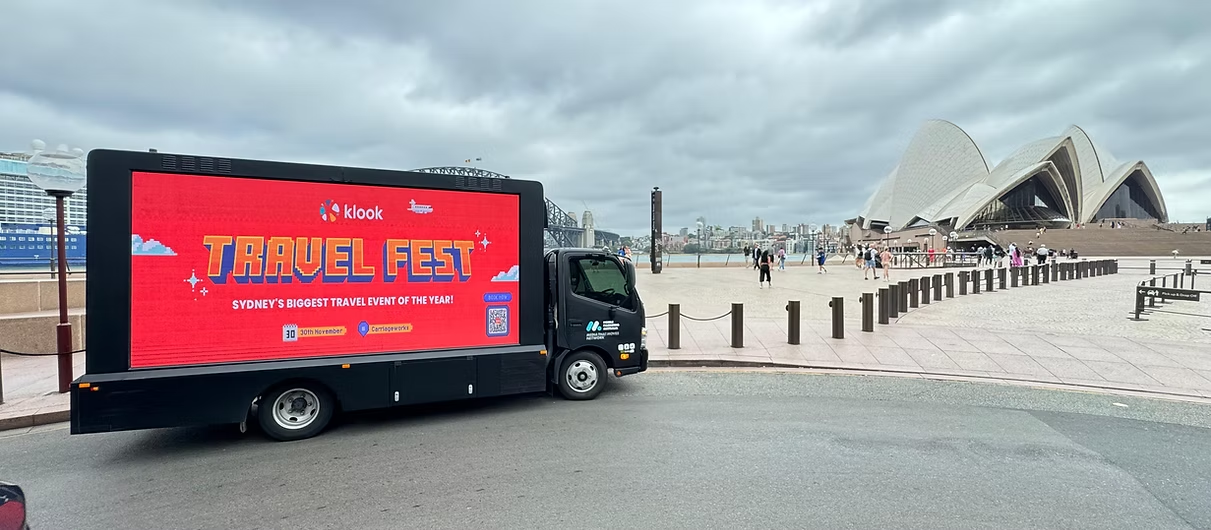Advertising is everywhere—on phones, websites, television, and traditional billboards. Yet mobile billboards stand out because they break through the clutter of everyday media. Unlike static signs, they are dynamic, moving through busy streets and reaching audiences in unexpected places. Their ability to appear directly in the consumer’s path makes them nearly impossible to ignore. This movement, combined with bold visuals, taps into psychological triggers that naturally capture attention.
The Role Of Novelty In Consumer Perception
Humans are wired to notice novelty. When something looks different from the environment, our brains automatically pay attention. Mobile billboards leverage this instinct by appearing where people least expect them — at intersections, near shopping centres, or outside popular events. The constant change of location prevents them from blending into the background like static billboards often do. This novelty creates curiosity, which encourages viewers to process the message more deeply.
Memory Retention And Repetition
For advertising to be effective, it must be remembered. Research shows that people are more likely to recall information when they encounter it in a surprising context. A brightly colored truck driving past with a bold slogan or creative design creates a mental snapshot in the viewer’s mind. Since mobile billboards travel across multiple neighbourhoods and city areas, the repetition of exposure reinforces brand recognition. This makes consumers more likely to remember the product or service later, particularly when making a purchase decision.
Emotional Responses To Movement
Movement stimulates our brains in ways static objects cannot. A moving advertisement signals something happening, prompting people to look up and pay attention. This natural response increases engagement with the ad’s visuals and messaging. Additionally, mobile billboards often appear in social or high-energy settings, such as concerts, sports games, or festivals. In these environments, consumers are already emotionally stimulated, and the positive association carries over to the brand being advertised.
Targeting And Contextual Influence
One of the psychological advantages of mobile billboards is their ability to reach audiences in specific contexts. For example, an ad for a new restaurant driving past a food district taps into the consumer’s current state of mind. Similarly, promoting a concert or product launch near entertainment venues ensures the ad resonates with people who are already in the mood for new experiences. This contextual targeting increases the relevance of the message, which in turn increases consumer response.
Social Proof And Shared Experiences
When people see the same mobile billboard in multiple locations or events, it reinforces the perception that the brand is everywhere. This creates a sense of social proof — the idea that if something is widely visible, it must be popular or trusted. Consumers often photograph unusual or creative mobile billboards, sharing them on social media. This user-generated content further amplifies the campaign’s reach and establishes credibility through peer validation.
Psychological Persuasion Through Design
The design of a mobile billboard plays a crucial role in how it influences consumer psychology. Bright colours, bold fonts, and high-contrast imagery grab attention instantly. Short, memorable slogans are more likely to be retained, while creative or humorous visuals spark emotional connections. Since people typically have only a few seconds to process the message as the billboard passes, clarity and simplicity are essential. The combination of eye-catching design and strategic movement makes the advertising medium psychologically persuasive.
The Lasting Impact On Consumer Behaviour
The ultimate goal of any advertisement is to influence consumer behaviour. Mobile billboards achieve this by embedding themselves in daily routines. Whether someone notices a truck while commuting, shopping, or attending an event, the experience feels organic rather than forced. Over time, this repeated, subtle exposure builds familiarity and trust. Consumers are more likely to choose brands they recognise and associate with positive experiences. That’s why mobile billboard campaigns often generate higher engagement than many traditional advertising formats.
Conclusion
Understanding consumer psychology reveals why mobile billboards are so powerful. Their movement creates novelty, their designs drive memorability, and their presence in specific contexts builds relevance and trust. They don’t just deliver a message—they create an experience that lingers in the minds of viewers. For businesses seeking impactful ways to engage audiences, exploring options such as truck billboard advertising offers a strategic path to maximize visibility and brand recall.
